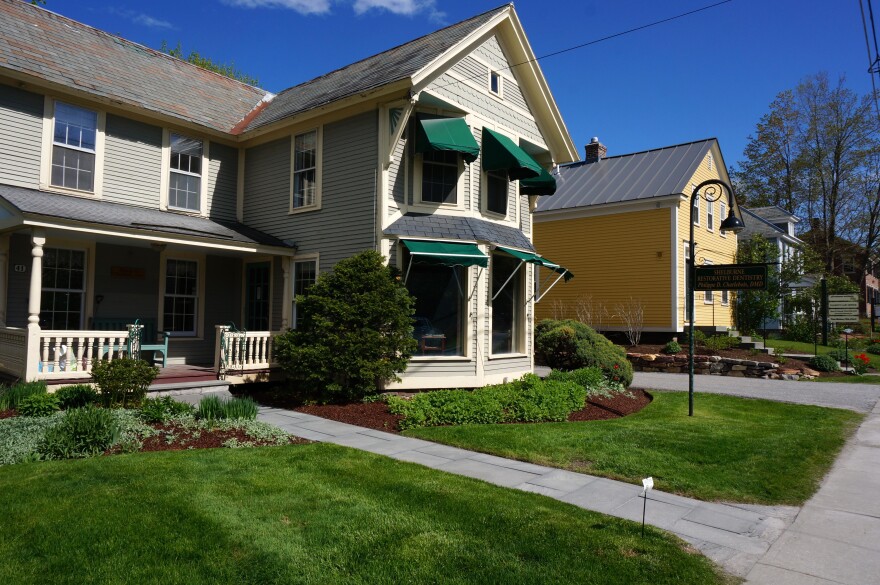This week, new form-based zoning regulations went into effect in Shelburne. It’s a concept the town has been studying for over five years, in an effort to fight sprawl on Route 7. The town line between South Burlington and Shelburne falls amid big parking lots for a string of retail stores, restaurants and motels on Route 7, also known as Shelburne Road.
A 'Welcome to Shelburne' sign lets you know when you've crossed between municipalities. But as for development on the strip, there isn't much change.
It’s a different story a few miles down the road in Shelburne’s village center, which has the distinguished look of a classic New England downtown. The buildings have brick or clapboard siding. There are big trees, and people are walking between businesses and eating creemees outside the country store.
Shelburne planners would like to see more of that classic look stretching north on Route 7. And that’s why they’ve introduced form-based zoning.
Form-based zoning is also often referred to as form based code. Basically, it means a city or town is regulating what development looks like, rather than what will happen there.
As Shelburne Director of Planning and Zoning Dean Pierce explains: "Instead of emphasizing uses within the certain zoning districts, it emphasizes design and the way buildings look, and pays less attention to what uses are allowed inside those buildings."

Shelburne has been studying form-based code since late 2010. And the new form-based zoning regulations that went into effect this week feel very much like a first step, designed to try out something new. It’s a single overlay district along part of the Route 7 corridor and it’s optional for property owners.
"If someone likes what the form-based zoning approach offers them, they can opt to use it for their property," says Pierce. "Once they’ve decided to use it, then that property is subject to form-based zoning from this point on."
Pierce says this flexible approach made the new concept more attractive to the select board, which had the final say in adopting form based zoning. And, Pierce says, if form-based zoning works well for Shelburne, then the old zoning regulations might be phased out.
"It’s conceivable that in some period of time it would become the default regulations," he says. "And then it would no longer be an overlay. It would no longer be optional, but replace what is used currently as the default. But until we get some more experience the select board is going to take a wait-and-see attitude."
Construction under the new regulations must conform to a menu of building types prescribed by the town. But Pierce says there’s a payoff for agreeing to build to the town’s aesthetic standards.

"If you develop in this manner, your path to gaining approval will be more predictable and it’ll be faster than if you go the traditional approach," he says. "The tradeoff is that the developer has to look at the regulations and see the types of buildings and design that the regulations require. And they have to be prepared to move forward with one of those."
The Northeast Kingdom city of Newport was an early adopter of form-based code in Vermont. It's been in effect in Newport’s downtown and business districts since 2010. Zoning Administrator Charles Elliott says, in Newport, form based code has been a success.
"The form-based code is specifically designed to encourage the development of a downtown area." — Newport Zoning Administrator Charles Elliott
"I think our form-based code is working very, very well," says Elliott, "because it does insist that buildings that go in look like a downtown business district."
In Newport, the code dictates that businesses must be up close to the street, with parking behind or under the buildings. Elliott also points out that retaining traditional zoning in the residential portions of town has complemented the use of form-based code in the downtown and business districts.
"And I think the combination works very well," he says. "Basically, conventional coding was designed to encourage suburban-type building and housing developments and does very well with it. The form-based code is specifically designed to encourage the development of a downtown area."
Form-based zoning is gaining traction throughout Vermont. It’s in place in downtowns of various sizes, including Jericho, Winooski and Burlington. And it just went into effect in South Burlington as well.





